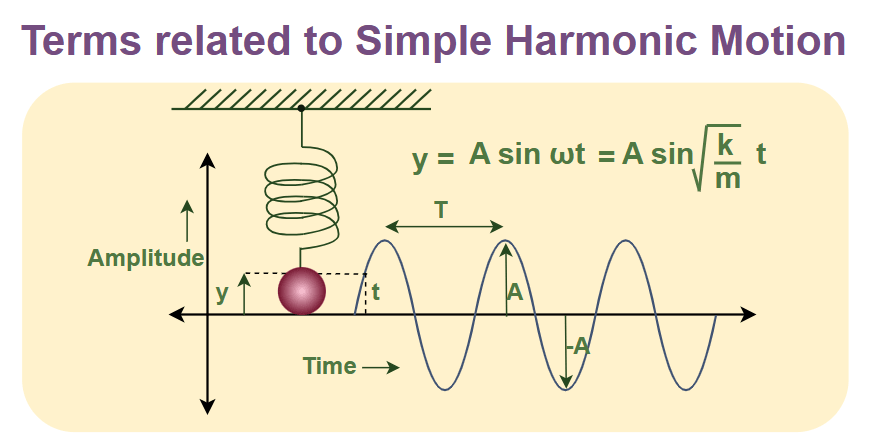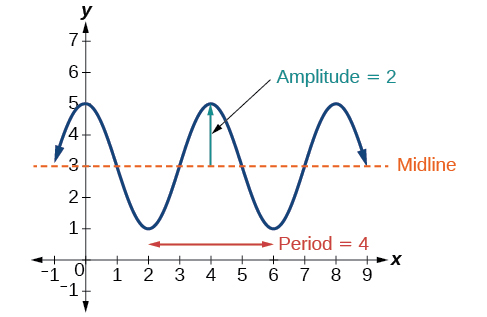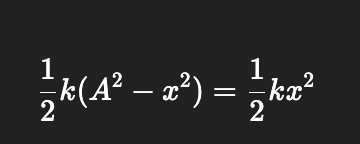Phys 1C Wk 1 Quiz 1 content Oscillations & Sinusoids
1/16
There's no tags or description
Looks like no tags are added yet.
Name | Mastery | Learn | Test | Matching | Spaced |
|---|
No study sessions yet.
17 Terms

What is negative feedback? hint; restoration
A mechanism that restores a system to equilibrium (eg; body temp)

Simple Harmonic Oscillator (SHO)?
A mass-spring system that oscillates sinusoidally between KE and PE due to a linear restoring force.

What are amplitude and period of y = cos(t)?
Amplitude = 1; Period T = 2π
How are vector components found using angles?
x = r·cos(θ), y = r·sin(θ)
General form of sinusoidal function, y = A·cos(ωt + φ) + y₀ parameters?
A = amplitude, ω = angular frequency, φ = phase shift, y₀ = vertical shift
What are vmax and amax in Simple Harmonic Motion?
vmax = ωA, amax = ω²A

Spring system where mass affects period

What is the differential equation for SHO?
d²x/dt² = - (k/m) x
SHO total energy conserved= KE+PE

Period proportionality to spring constant and mass

When does SHM spring have maximum velocity & KE
At equillibrium postion
Applied force Y axis and Displacement X axis area under curve exemplifies?
Work done on system
Spring constant of bb gun barrell horizontal
PE spring = KE spring
Vibrational Frequency
Frequency=Velocity/Wavelength
Mass spring system frequency

Function of position Ex) 4.5(cos(3.4*t)) when does it cross x(t)=0 (y axis)
Cos (θ)=0